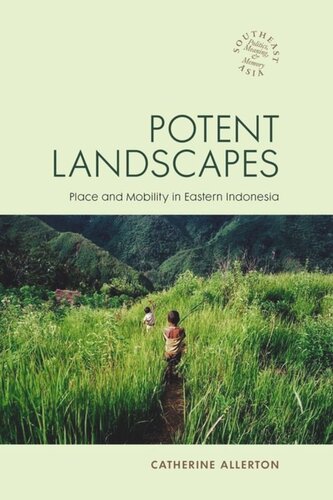

Most ebook files are in PDF format, so you can easily read them using various software such as Foxit Reader or directly on the Google Chrome browser.
Some ebook files are released by publishers in other formats such as .awz, .mobi, .epub, .fb2, etc. You may need to install specific software to read these formats on mobile/PC, such as Calibre.
Please read the tutorial at this link: https://ebookbell.com/faq
We offer FREE conversion to the popular formats you request; however, this may take some time. Therefore, right after payment, please email us, and we will try to provide the service as quickly as possible.
For some exceptional file formats or broken links (if any), please refrain from opening any disputes. Instead, email us first, and we will try to assist within a maximum of 6 hours.
EbookBell Team

5.0
40 reviewsThe Manggarai people of eastern Indonesia believe their land can talk, that its appetite demands sacrificial ritual, and that its energy can kill as well as nurture. They tell their children to avoid certain streams and fields and view unusual environmental events as omens of misfortune. Yet, far from being preoccupied with the dangers of this animate landscape, Manggarai people strive to make places and pathways “lively,” re-traveling routes between houses and villages and highlighting the advantages of mobility. Through everyday and ritual activities that emphasize “liveliness,” the land gains a further potency: the power to evoke memories of birth, death, and marriage, to influence human health and fertility.
Potent Landscapes is an ethnographic investigation of the power of the landscape and the implications of that power for human needs, behavior, and emotions. Based on two years of fieldwork in rural Flores, the book situates Manggarai place-making and mobility within the larger contexts of diverse human-environment interactions as well as adat revival in postcolonial Indonesia. Although it focuses on social life in one region of eastern Indonesia, the work engages with broader theoretical discussions of landscape, travel, materiality, cultural politics, kinship, and animism.
Written in a clear and accessible style, Potent Landscapes will appeal to students and specialists of Southeast Asia as well as to those interested in the comparative anthropological study of place and environment. The analysis moves out from rooms and houses in a series of concentric circles, outlining at each successive point the broader implications of Manggarai place- and path-making. This gradual expansion of scale allows the work to build a subtle, cumulative picture of the potent landscapes within which Manggarai people raise families, forge alliances, plant crops, build houses, and engage with local state actors. Landscapes are significant, the author argues, not only as sacred or mythic realms, or as contexts for the imposition of colonial space; they are also significant as vernacular contexts shaped by daily practices. The book analyzes the power of a collective landscape shaped both by the Indonesian state’s development policies and by responses to religious change.